#Indonesian Textiles
Explore tagged Tumblr posts
Text











Batik Fabled Cloth of Java
Inger McCabe Elliott
collabration Paramita Abdurachman, Susan Blum, Iwan Tirta, photo by Brian Clarke
Periplus Editions, Hong Kong 2004, 240 pages, 23x30,5cm, paperback, ISBN978-0-7946-0668-8
euro 40,00
email if you want to buy [email protected]
Batik: Fabled Cloth of Java is a sumptuous, classic book, richly illustrated with color plates of the finest antique and contemporary batik from thirty museums and private collections around the world. It includes historical photographs, etchings, engravings, maps and photographs of modern Java.
10/03/24
16 notes
·
View notes
Text
For #WorldLizardDay 🦎:

Ceremonial cloth (pua) with monitor lizards slumbering on watchtowers (bundau bepadung) Iban peoples, Borneo, 19th c. Homespun cotton, 87 1/2 × 40 1/4 in. (2 m 22.25 cm × 102.24 cm) Dallas Museum of Art 1983.130
#animals in art#animal holiday#19th century art#textiles#ceremonial cloth#lizard#lizards#monitor lizard#World Lizard Day#Indonesian art#Southeast Asian art#Australasian art#Asian art#Iban art#Dallas Museum of Art
8 notes
·
View notes
Text
Weaving Wonders: Exploring Songket Textiles in Palembang Discover the Rich Heritage Behind Palembang’s Luxurious Songket Weaving Step into the vibrant world of Songket, a handwoven textile tradition that has been cherished for generations in Palembang, South Sumatra. Known for its shimmering gold

View On WordPress
#adventure#cultural textiles#culture#experience#explore#fabric#Indonesia#indonesian weaving techniques#journey#palembang#Palembang textiles#placetogo#placetovisit#songket#songket artisans#songket weaving#south sumatra#textile#traditional#traditional indonesian fabric#travel#woven
0 notes
Text







#batik fashion#indonesian batik#slimfit shirt#elegant menswear#modern batik#heritage fashion#luxury batik#handmade clothing#traditional textile#premium shirt#formal menswear#cultural heritage#exclusive fashion#tailored fit#sophisticated style#batik lovers#artisan craftsmanship#high quality fabric#stylish menswear#phoenix motif#timeless design#classic batik#etsy seller#handmade shop#etsy finds#small business support#shop small#independent brand#fashion marketplace#handmade with love
0 notes
Text

Unknown (Lasem, Indonesia, ca. 1910). Woman's Hip Wrapper (Sarung Kelengan). Los Angeles County Art Museum.
1 note
·
View note
Text
"The relationship of textiles to writing is especially significant, not only for the cuneiform-like qualities of many patterns (preserved in a Hungarian term irásos, meaning 'written'), but also for the parallels between ink on papyrus and pigment on bark cloth. There is, in fact, little difference between the two. Such connections are implied in many textile terms. For example, the Indian full-colour painted and printed 'kalamkari' are so named from the Persian for pen, kalam; the wax for Indonesian batiks is delivered by a copper-bowled tulis, also meaning pen. The European term for hand-colouring of details on cloth is 'pencilling'. The Islamic term tiraz, originally denoting embroideries, came to encompass all textiles within this culture that carried inscriptions. And the patterns woven into the silks of Madagascar are acknowledged as a language: the Malagasy vocabulary for writing and preparing the loom are synonymous, while the finest stripes are zanatsoratra, literally children of the writing, or vowels. The study of textiles is, in fact, a branch of palaeography, in which deciphering and dating reveals the stories encapsulated in cloth 'handwriting'.
With or without inscriptions, textiles convey all kinds of 'texts': allegiances are expressed, promises are made (as in today's bank notes, whose value is purely conceptual), memories are preserved, new ideas are proposed. Records were kept in quipu (khipu) a method of knotting string used by the Incas and other ancient Andean cultures to keep accounts and communicate information, the oldest of which is some 4,600 years old. Many anthropological and ethnographical studies of textiles aim at teaching us how to read these cloth languages anew. The 'plot' is provided by the socially meaningful elements; the 'syntax' is the construction, often only revealed by the application of archaeological and conservation analyses. Equally, the most creative textiles of today exploit a vocabulary of fibres, dyes and techniques. Textiles can be prose or poetry, instructive or the most demanding of texts. The ways in which they are used - and reused - add more layers of meaning, all significant indicators of sensitivities that can be traced back to the Stone Age."
— Mary Schoeser, World Textiles
525 notes
·
View notes
Text
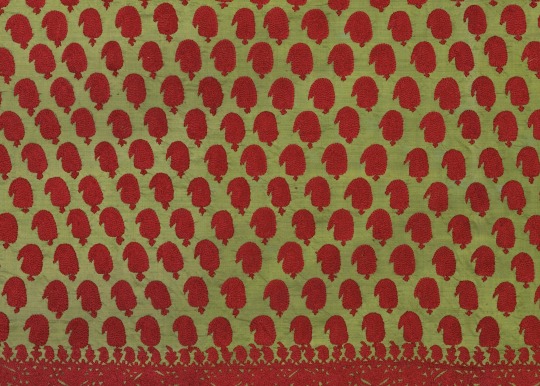
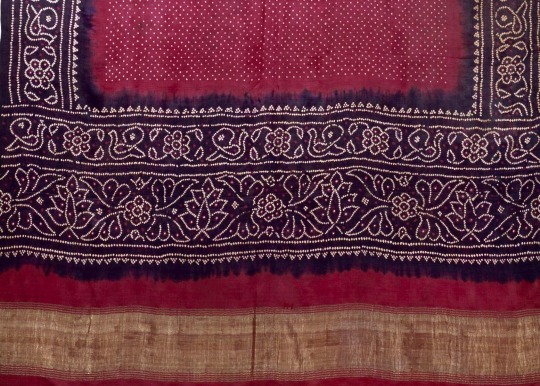
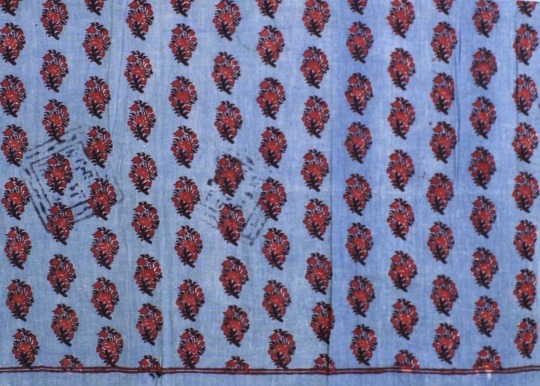
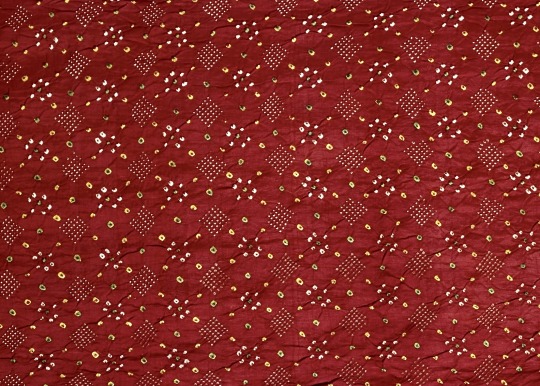
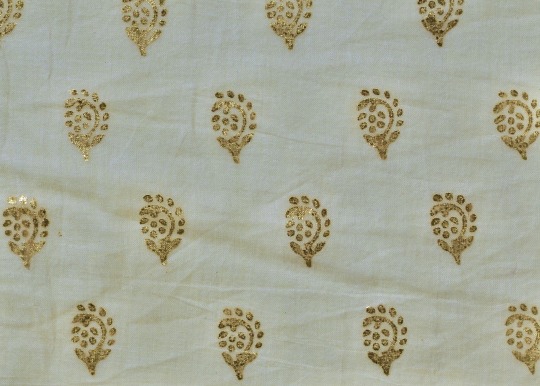
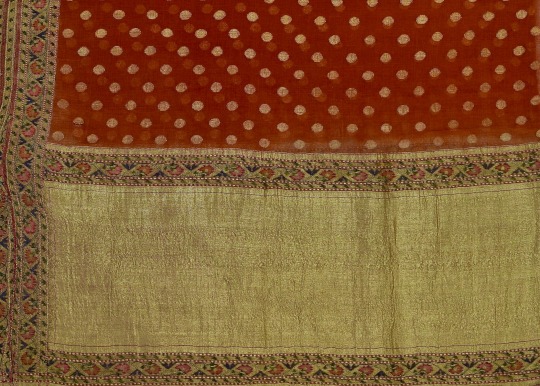
19th-century Indian garments produced for the domestic market.
Techniques include aari (chain-stitch) embroidery; floral block-printing (likely performed in Jaipur); application of gum topped with gold powder; tapestry-style weaving; and appliqués.
Contrast Indian textiles produced for the Indonesian, Thai, and European markets.
112 notes
·
View notes
Text
Enjolras (& Grantaire)
While not really a presence in what i'm usually writing about, I still wanted to design them. Enjolras certainly is more relevant than Grantaire when I'm writing about Marius, though. Sorry !
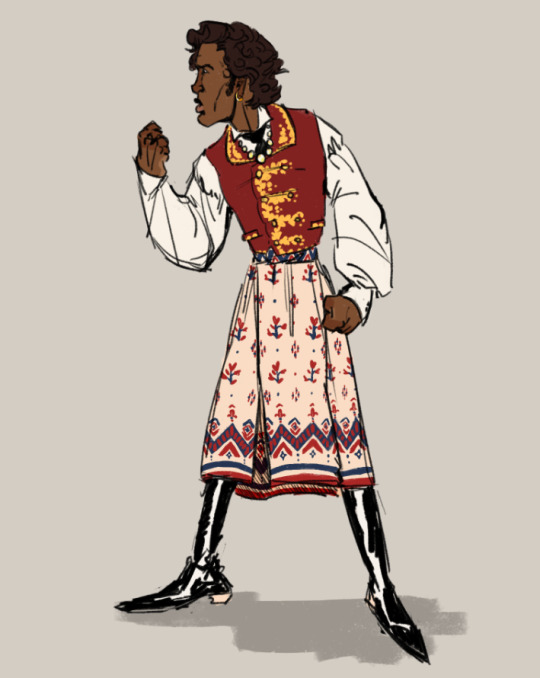
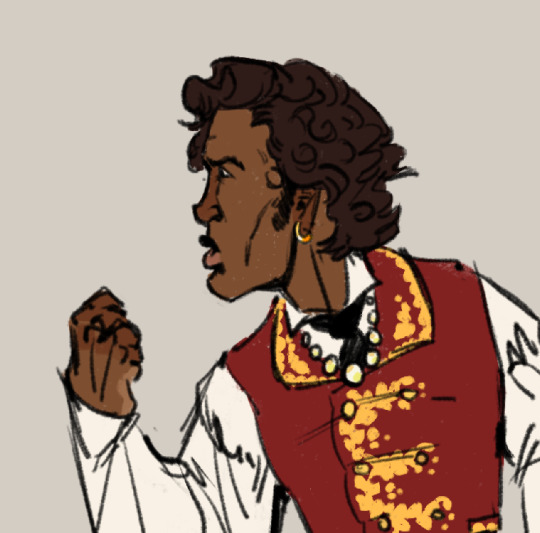
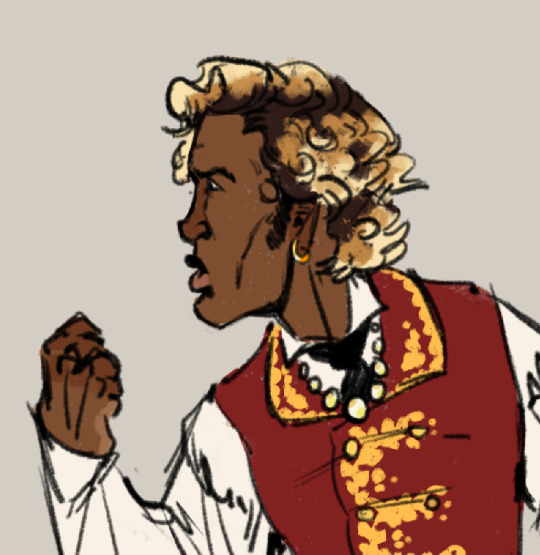
With a blond/..er, frosted tips? Version. Cause I know blondjolras is like canon and all but I'm not sure which I prefer.
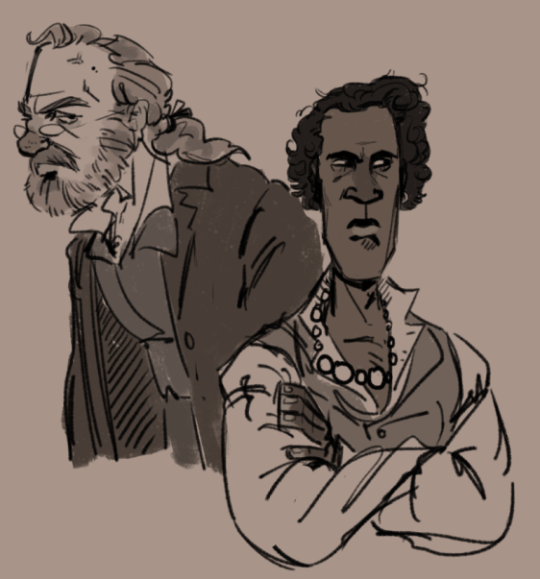
Grantaire's design is still very much in the early stages, and whether it will ever leave them still remains to be seen . I didn't draw him in colour, but he is indeed ginger and taller than enjolras, thanks Kyle Adams! (With credit to Tom Hext)
So! Design details!
My Enjolras is Javanese. Representing this (to the best of my very british ability) is his sarong (the garment around his waist). While not Javanese in essence, Enjolras is not currently living in Java/Indonesia to be able to receive that direct cultural influence. Some batik (the name of the textile pattern) would have had european influence. This can be seen in the design I have created in the branches, which I tried to base on the tree brances seen on the symbol of the French Revolution.
Also on the batik is a fleur-de-lis, and alongside the french flag stipes on the trim, connects the indonesian to the french. Admittedly the addition of the fleur-de-lis doesnt really make much sense considering it wasn't particularly used much after the Revolution, so that might end up getting changed.
The necklace he wears is also javanese in origin - admittedly I should really have looked at a reference as they are NOT made from beads, so that would be an amendment for later, but he wears that also to represent his heritage. It also somewhat symbolises his more fortunate background.
His earring is simply for flair, however since they weren't particularly common, I guess it's him straying from the status quo.
Same goes for the bleached hair - purely to stand out. But I'm not sure if that's a permanent addition to his design yet.
In my first design I had him wearing trousers and shoes, but I've changed it to a pair of boots, as they are more militaristic in nature and practical.
As for grantaire... not much to say. He looks older than his days, a bit bloated, certainly his swollen alcoholic's nose too. Hair's grown long as he's stopped caring about getting it cut and styled at the barber, but hates how cropped hair makes his head feel cold. I'd say that's the situation with his beard too - can't be arsed getting it shaved.
Anyway.... next post will probably be about the old men, don't worry. Just needed to get this out of my system.
Any requests or questions about them or the other amis are totally welcomed - but i can't guarantee i'll have a decent answer past these 2 or courfeyrac. SORRY
85 notes
·
View notes
Text

And another in the series "Quilts I finished but forgot to take photos and haven't posted until now". This one is based on a garden walkway in South Africa. And image that stayed in my head after visiting my sister. The fabrics have all been in my family for 1-2 generations and gradually made their way to me. All Indonesian batiks (grateful hug to my Indonesian auntie). Handquilted. The quilting has subtle color changes depending on the type of batik in the background. I was thinking about colonialism and textiles as I was making this, especially as relates specifically to batik and modern African wax prints. Title: "Tracing Family Lines". Started ca. October 2023. Finished ca. January 2024.



36 notes
·
View notes
Text

Mulyana: the art of playful crochet
I just stumbled on a really interesting interview with a textile artist called Mulyana. Here is a quote from the Textile Artist blog. His work is amazing - such an inspiration!
Mulyana is an Indonesian artist known for his colourful crocheted coral worlds of fun characters inspired by the television shows of his youth. His artwork has become a proliferating entity, continually growing and evolving into an interconnected world of beings. He is driven by his love of crocheted handiwork, combined with the meticulous requirements of crochet pattern design. He uses his work to explore religion, to achieve happiness through creativity, and as a way to connect with community.

Top Pic - Mulyana: Dimana Mogus Exhibition, 2016, Crochet
Bottom Pic - Mulyana: SATU, 2018, Crochet
23 notes
·
View notes
Text


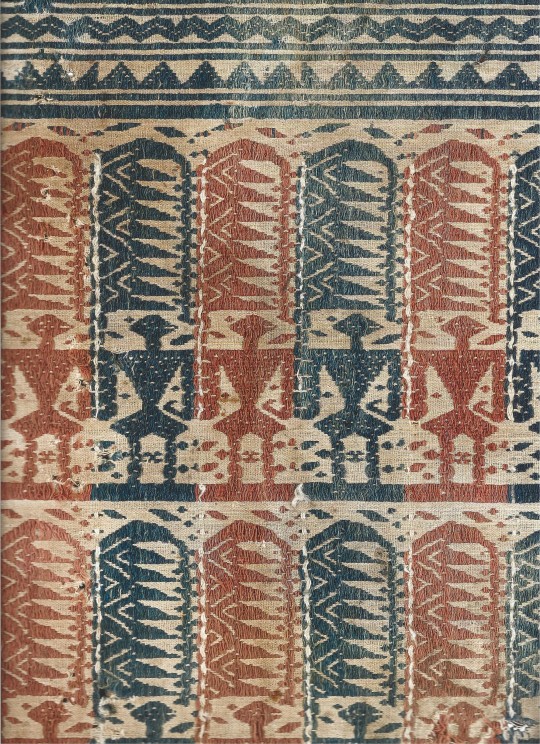
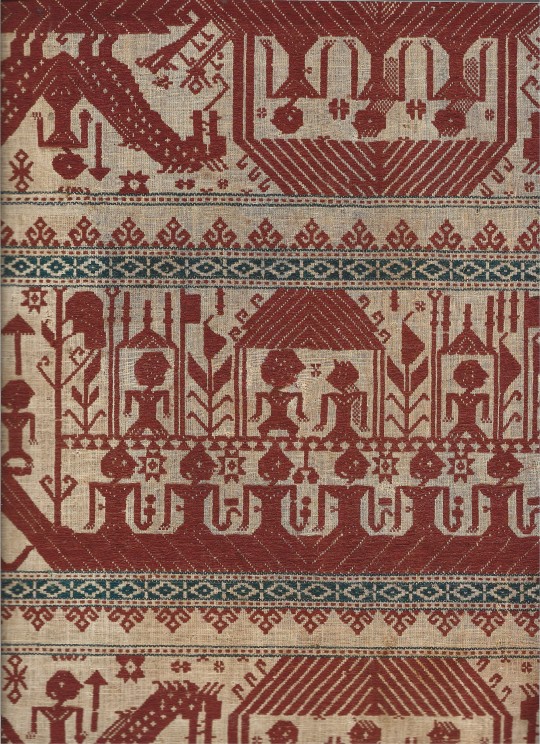

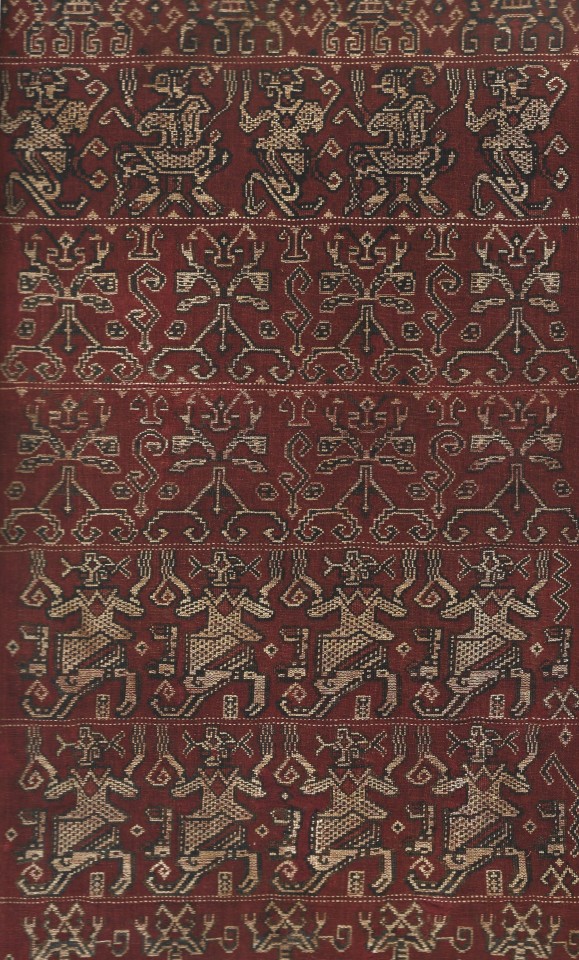
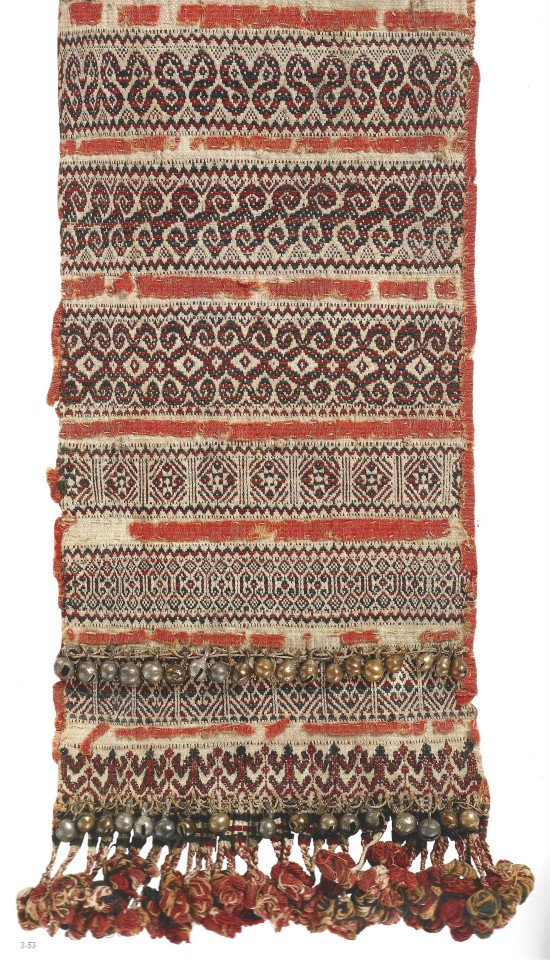


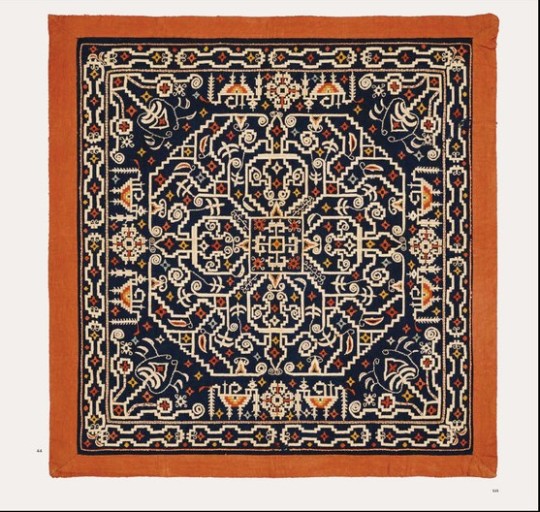
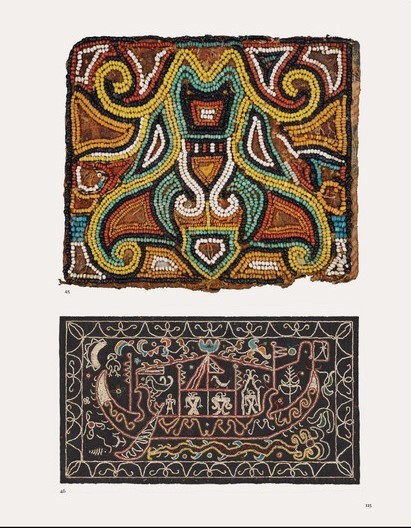
Textiles of Indonesia
The Thomas Murray Collection
Contributors: Lorraine Aragon, Joanna Barrkman, Chris Buckley, Kristal Hale, Valerie Hector, Janet Alison Hoskins, Itie van Hout, Eric Kjellgren, Fiona Kerlogue, Brigitte Khan Majlis, Robyn Maxwell, Thomas Murray, and Sandra Sardjono
Prestel, London 2021, 534 pages, 26,5x35cm, ISBN 9783791387659
€112,00
email if you want to buy [email protected]
Gathered over the course of four decades, the Thomas Murray collection of Indonesian textiles is one of the most important in the world. The objects comprise ritual clothing and ceremonial cloths that tell us much about the traditions of pre-Islamic Indonesian cultures, as well as the influences of regional trade with China, India, the Arab world, and Europe. As with the earlier volume, Textiles of Japan (Prestel, 2018), the book focuses on some of the finest cloths to come out of the archipelago, presenting each object with impeccable photographs. Geographically arranged, this volume pays particular attention to textiles from the Batak and the Lampung region of Sumatra, the Dayak of Borneo, and the Toraja of Sulawesi, as well as rare textiles from Sumba, Timor and other islands. Readers will learn about the intricate traditions of dyeing, weaving, and beading techniques that have been practiced for centuries. Original texts by international experts offer historical context, unspool the mysteries behind ancient iconography, and provide new insights into dating and provenance. At once opulent and scholarly, this book arrives at a moment of growing interest in Southeast Asian culture and carries the imprimatur of one of the art world's leading collectors.
02/11/23
#Textiles Indonesia#Thomas Murray Collection#Batak and Lampung region#Sumatra#Dayak Borneo#Toraja Sulawesi#Sumba textiles#Timor Textiles#Indonesian Textiles#textiles books#fashionbooksmilano
29 notes
·
View notes
Text
One of Indonesian novel that i remember is some tere liye works. That is Bumi, Bulan and hujan.
One of the book i had i gave to my friend, i mean they borrowed it and never gave it back but lowkey dgaf. I have finished it. It was the Bumi books.
If i have to say one thing, his book is very good with worldbuilding, they are so so fun to read. He makes this paragraph that is so textile and entertaining to read, it's almost like you can imagine how it feels to be in the world he write. Hujan is one of his novel that excels at this, the romance i think was good. The ending was a bit grim though and very bittersweet, not that im complaining its one of the memorable part of the book.
#ignorelist#I should read more indonesia novel tbh#I dont even know if it was that GOOD good#because i read it when i was like 12#I think everything was good bro
6 notes
·
View notes
Text
Weaving Wonders: Exploring Songket Textiles in Palembang
#adventure#cultural textiles#culture#experience#explore#fabric#Indonesia#indonesian weaving techniques#journey#palembang#Palembang textiles#placetogo#placetovisit#songket#songket artisans#songket weaving#south sumatra#textile#traditional#traditional indonesian fabric#travel#woven
0 notes
Text





Series "Tampan Tulip" by Jennifer Tee (b 1973, Dutch with Indonesian roots).
Jennifer is into spiritual philosophies, ancestral knowledge, craft traditions and pre-colonial heritage, drawing from her Dutch-Indonesian background. J. Tee studied at the Rijksakademie, the Sandberg Instituut and the Gerrit Rietveld Academie in Amsterdam. She lives and works in Amsterdam.
The city’s lineage as a mercantile and imperial centre over centuries, carrying out oceanic trade and conquests, plays a role in her practice alongside her own family stories. J. Tee’s father travelled to the Netherlands by ship in the 1950s, and her maternal grandfather, an exporter of tulip bulbs, would regularly sail to the United States. Jennifer's works of J. Tee respond to experiences of cultural mixtures, diasporic memory and story of trade routes which displaced but also connected people, commodities and objects.
Her encounter with Tampan and Palepai textiles, known as ship cloths by Europeans, led to this long-term inquiry. Reviving emblematic patterns through a collaging process using pressed tulip petals, the artist pays homage to ancestral storylines.
10 notes
·
View notes
Note
So it’s that time of year again in marvel comics. The Summer Hellfire Gala! They already teased some designs in the past months for this event and some are hit or miss.
My question if such a gala was a thing in TTB universe, who would be the top designers for the cons and bots for such an event? Would they create them on their own creativity or from getting insights on the clients perspective and wants?
Oh this is a WILD ask and I’m dgshdjdhjfjdjdjff about it because OUTFITS FOR EVERYBODY.
I know most top tier fashion houses specialising in menswear would be FOAMING AT THE MOUTH to dress both Optimus Prime and Megatron. I’m gonna say Hugo Boss for Megs, and Ralph Lauren for OP. Megs has some input, especially since Starscream has impressed upon him the importance of optics, and while he doesn’t know a damn thing about fashion, he does know the sort of statement he’d like to make with it. OP is more of a ‘surprise me’ sort of guy, I can imagine he was VERY taken aback/flustered by the idea of flaunting in public in such a way, though Jazz and Mirage likely manage to talk him into it for PR purposes. He embraces it as a fun yearly event after a while!
Mirage has two designers on standby—Burberry and Alexander McQueen—at all times all the way from his old days as an Earl. In this case they very much rely on input from him, as he actually is part of the business, and there would be occasions where he comes wearing something he designed himself for added pizzazz and press media loses its fucking mind. Tommy Hilfiger saw Tom Holland Bumblebee and immediately shoved all the competition off the cliff—-he’s the perfect mix of preppy street youth to showcase their work for the younger demographic. Like OP, Bee is baffled at the idea of being anything resembling a fashion icon, but he ropes in Charlie and Memo for the perfect runway triple threat. He’s more hands-off about it, like OP is.
Marc Jacobs definitely courts Jazz—the streetwise aesthetics with a little prep, a little grunge, a little couture is something the man wears VERY well! Jazz would be 20% input and 80% Surprise Me, he loves the thrill of seeing that final piece unveiled.
Jean Paul Gaultier bags the fashion prizefighter in Blurr! These two have DEFINITELY worked together for a very long time—-likely ever since Blurr won their first race. Initially neither had much input of which was mostly given by the company Blurr worked for—they had to project a certain image, and that stiffled a lot of creativity on their end, but once Blurr has the freedom to properly express themselves as a member of the Autobots, both the designer and client are more than happy to go BUCK WILD with input on designs.
Valentino gets Sunstreaker, and Giorgio Armani bagged Sideswipe, and both sides get into a playful rivalry about it, so in this case, the Lambo Bros definitely had vested interest to give in as much input as they could, though Sunny is WAY more of a primadonna about it.
Starscream reps his Sicilian heritage via Dolce & Gabbana, whose pieces he’s worn since his Senator days, and like Mirage, he has a LOT of input in the final product as he actually has experience making his own clothes, while Spanish designer Balenciaga bags his Seeker team mate Thundercracker, whose artistry and stage play background makes him a damn good canvas for avant- Garde looks (which he displays with all the subtlety of a very randy peacock). Thundercracker is about 50/50 Input to Surprise Me!
Soundwave would rep their home country by donning a piece by Indonesian designer Poppy Dharsono who does wonderful work mixing ethnic textiles and patterns with contemporary influences—they leave the whole thing in the designer’s very capable hands!
Comme Des Garçons would take on the challenge of dressing Drift (Ratchet is stayin out of this mess, but listen, he can look at the menu even if he doesn’t want to be a part of the smorgasbord!!)
Laserbeak managed to catch the eye of Dundas and she is dragging poor, very confused Ravage into this mess with her because SOMEONE CHOSE TO DRESS HER??? Y’ALL NOBODY CHOOSES TO DRESS HER LIKE SHE’S GONNA SAY NO TO THIS CHANCE TO STRUT HER STUF???? Bouncing off the walls excitement oh my GOD THEY WANT HER INPUT TOO QUICK MOVE OVER SHE NEEDS TO SET UP A PIN INTEREST BOARD!!!!
I’m thinking Vera Wang for Windblade, Yves Saint Lauren for Lightbright and Christie Brown for Chromia! All three are more in Surprise Me camp!
That’s all I got for now, but feel free to ask for specifics if they weren’t mentioned!
40 notes
·
View notes
Text
i got a book on indonesian textiles a few months ago and i have barely even looked at it fuck... well time to remedy that
23 notes
·
View notes